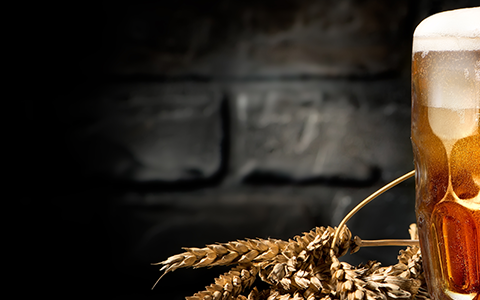Beer Lover’s Guide to the Right Glass
Why the Glass Matters
The best beer is a lot of beer, said a wise man once. And while that might be true, the best beer is also beer served in the right glass. There’s a specific glass for every style of beer—not just for art or sales, but for taste. The shape of a beer glass can influence aroma, color, and carbonation.
The explanation is simple: the foam head that forms when beer is poured acts like a lid, trapping the aromatic compounds responsible for the drink’s flavor and appeal. Since different beers produce different types of foam, the right glass helps preserve it, enhancing your overall sensory experience.
Some glasses also help preserve carbonation for longer, meaning your beer stays fizzy and fresh. So no, it’s not that you’re drinking slowly—it might just be the wrong glass.
Types of Beer Glasses
The Timeless Beer Mug
This is one of the oldest types of beer vessels in history—wide, sturdy, and designed for big servings. The beer mug is the symbol of Oktoberfest and festive gatherings. It’s perfect for many beer styles: golden lagers, dark Stouts, and Porters. Its wide opening lets you take hearty sips and fully enjoy the aroma.
Contrary to popular belief, frozen mugs aren’t ideal. The condensation can dilute your beer. Who wants watered-down beer?
The Elegant Flute
Similar to champagne flutes, these tall, slender glasses come in various conical shapes. They offer a refined look and are perfect for lighter, highly carbonated beers like Pilsners, Bocks, or light Lagers. Their tall form helps quickly release volatile compounds for an intense first sip. However, the beer loses its qualities quickly, so don’t linger. Most flutes hold around 250–330 ml.
The British Pint
The pint glass shares similarities with the mug: wide opening and generous size. It’s durable, stackable, and versatile—favored in British pubs. In Ireland, it’s almost sacrilegious to serve a Stout in anything else. The pint holds 568 ml and gets its name from the Latin word “pincta,” meaning “marked,” referencing volume marks on containers.
The Belgian Goblet or Chalice
Oversized wine-glass-style vessels, Belgian cups come in two main styles:
- Goblet: Taller, with a long stem and oval bowl
- Chalice: Shorter stem, thicker walls, and rounder bowl
They preserve a tall foam head and often feature etched bottoms to help bubble formation. Their wide opening allows large sips that release the beer’s complex aromas. Belgian IPAs, dark Ales, and beers with rich foam benefit from these regal vessels.
The Tulip Glass
Often mistaken for a wine glass, the tulip-shaped glass is ideal for highly aromatic beers: Belgian brews, Scottish Ales, American IPAs. It features a wide middle and a narrow top that flares out at the rim—this helps trap aroma and retain the foam head.
The Pilsner Glass
Very common, especially in regions where Lager is king. Tall and conical, either straight or slightly curved, it highlights the beer’s color and bubbles. It helps preserve the foam and is a familiar sight in many bars.
The Weizen Glass
Taller and thicker than the Pilsner glass, this one is made specifically for wheat beers. It has a narrow base and wider top, slightly inward-curving near the rim. It resembles a tulip bud—fitting, since “Weizen” is German for wheat.
Also called “Weißbier” in Bavaria, meaning “white beer,” due to its cloudy appearance after fermentation. Like the Pilsner glass, it helps showcase the color and foam of the beer, and its sturdy design makes it perfect for repeat use.


